Can I Paint My Baseboards a Different Colors
One of the easiest ways to make a room feel larger and richer is to paint walls and trim the same color. This design choice takes the guesswork out of what color trim paint you should use. These tips will help you achieve the perfect aesthetic for your home!
A home trend on the rise is painting walls and trim the same color. It's a beautiful – and a bit daring – design choice that has so many advantages.
If you've been here for very long, you know that I believe that paint can completely transform a space. Painting can be a quick and easy update that can instantly brighten a room. I love the cozy feeling of the neutral colors in our home.
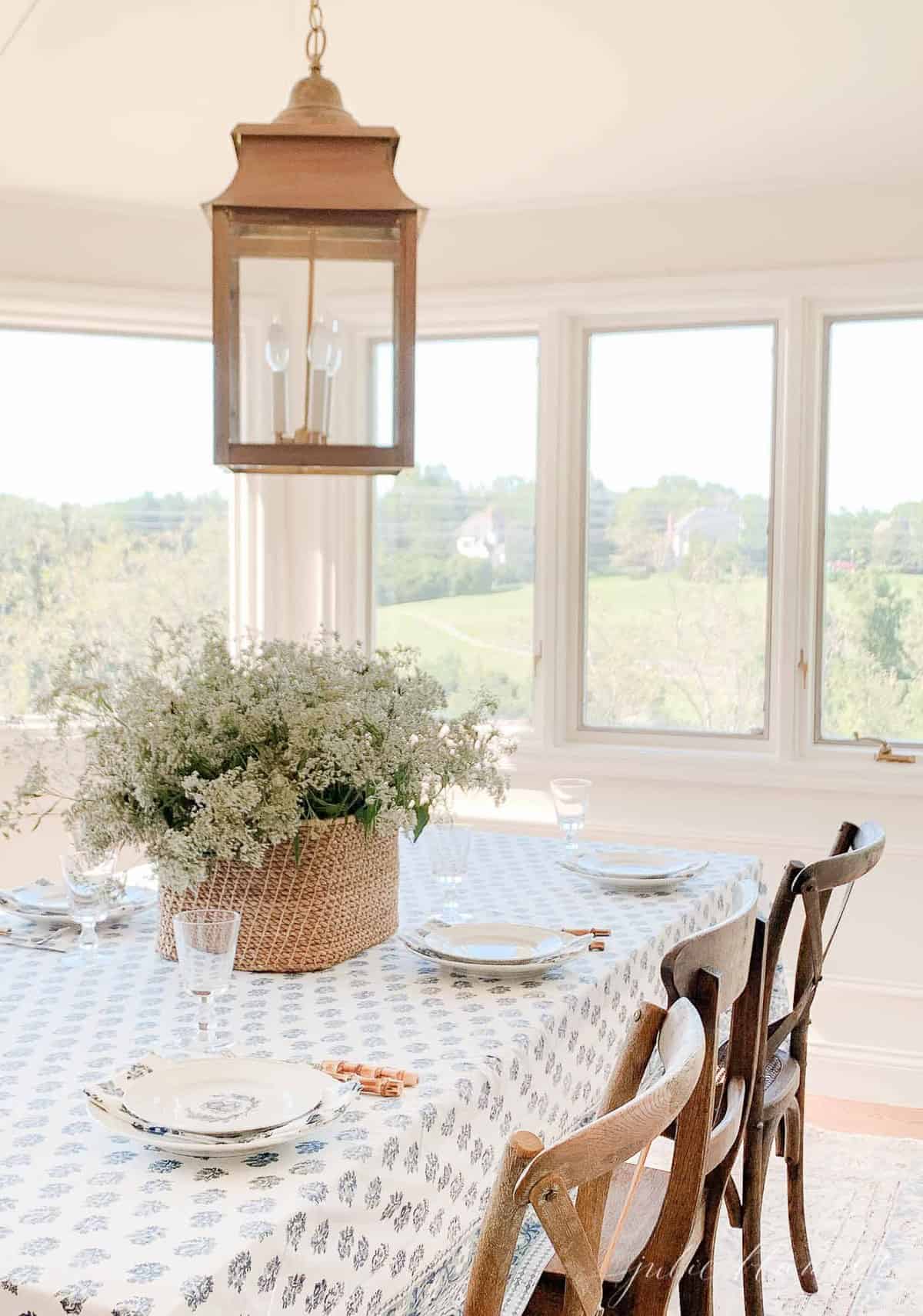
It's not as easy as simply painting your walls. You also have to consider your trim – that's your baseboards, window and door trim, crown moulding, and any built-in cabinetry. How you decide to paint your trim will have an impact on the overall aesthetic of your space.
Contrasting trim breaks up a space, whereas painting walls and trim the same color unifies a space. The effect can be subtle and serene or daring and dramatic, depending on your color choice.
For everything you need to know about painting trim, check out my post all about Trim Paint. It has everything from choosing the right brush, paint, and color to how to paint without sanding.
Painting Walls and Trim the Same Color
A few years ago, I painted the walls, trim, bookcases and moulding Sherwin Williams Zurich White. It instantly made our small living room feel larger, brighter, and more cohesive.
When painting walls and trim the same color, I recommend painting trim one sheen higher. For this space, I chose to paint trim in a semi-gloss finish and walls in eggshell.
Semi-gloss is perfect for trim, because it is durable and cleans easily. I prefer eggshell for walls for its high LRV (light reflective value) without too much shine. Try this look with a color like Benjamin Moore Pale Oak.
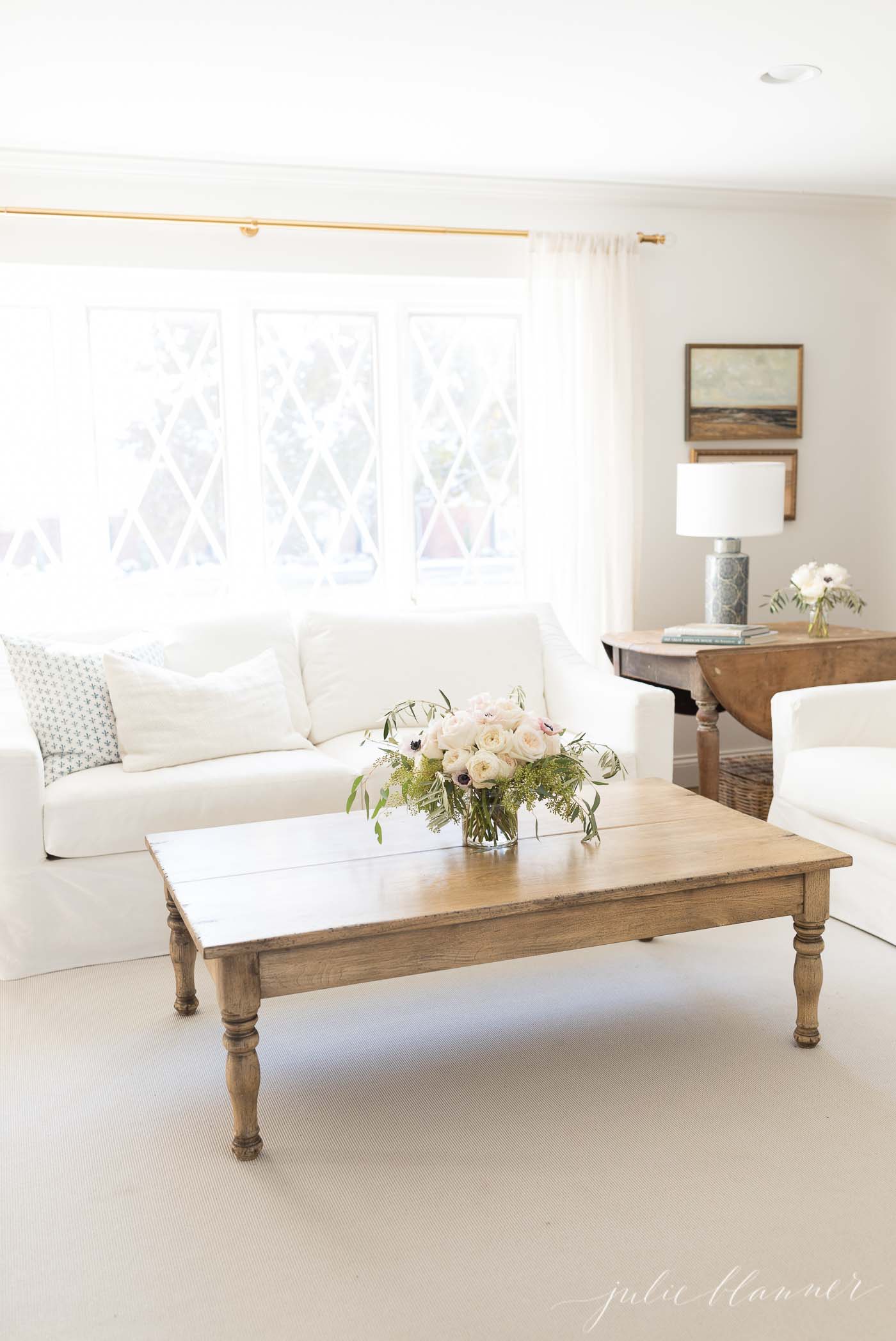
The difference between the two sheens is subtle, but it creates a lovely contrast when the light catches it. The higher gloss of the trim catches the light and looks so lovely!
If you'd like to save time and effort, this is the style for you. Of course, you should always be careful when cutting in lines between trim and walls. Using painter's tape helps keep lines clean. However, when painting walls and trim the same color, if you make a tiny slip here and there, no one will ever know!
If you want to use just one paint sheen for both, I recommend using a good-quality satin finish. It's a middle of the road sheen and will be durable yet cleanable without being too glossy. Learn more about paint sheens here.
Why You Should Paint Walls and Trim the Same Color
There are so many reasons why painting trim the same color as walls is a fabulous design decision. This simple design detail makes rooms feel larger, more open, and more seamless – even the cabinetry. It creates an elegant, classic look, but not in a showy or fussy way.
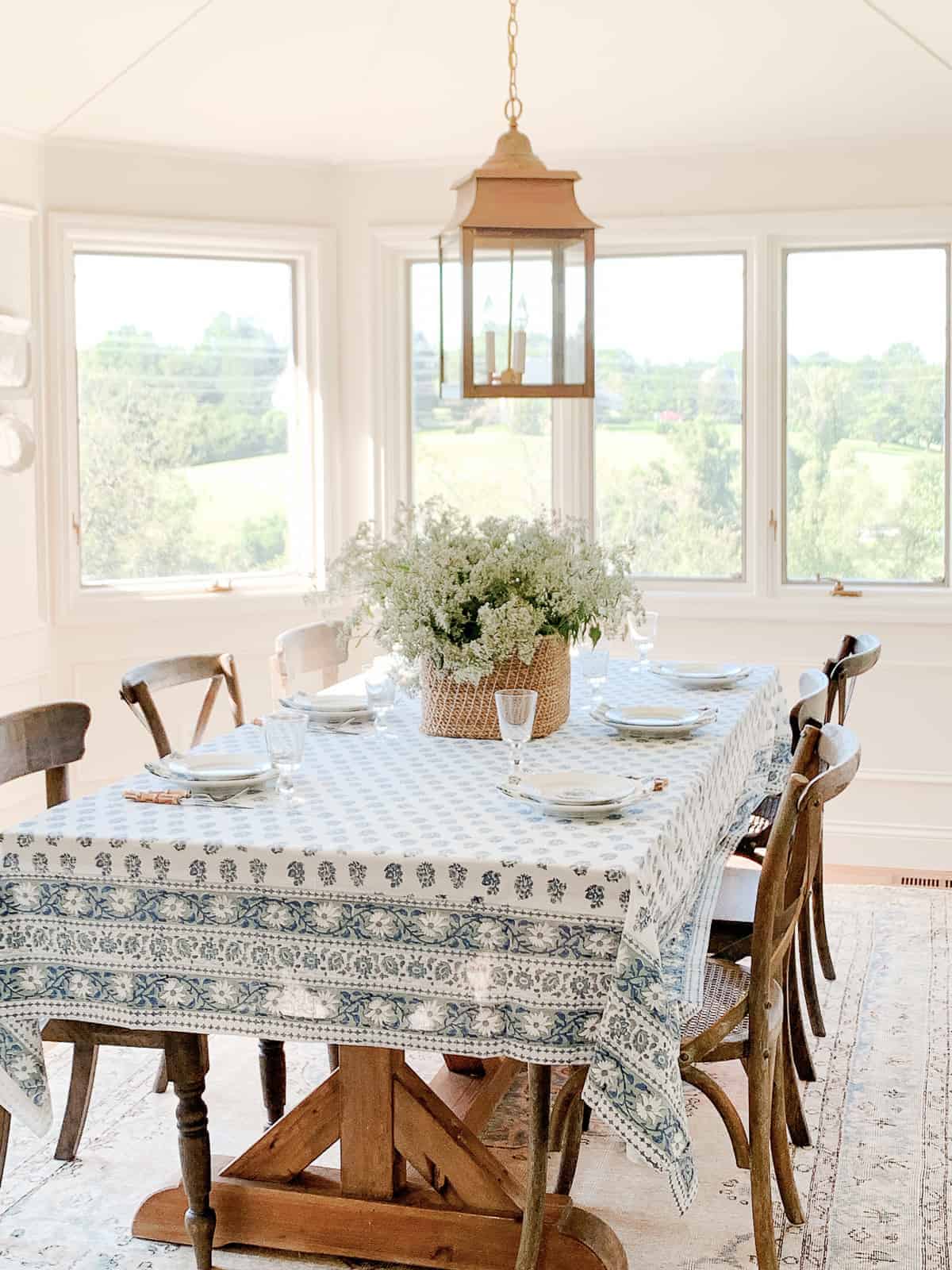
Understated Elegance
At its core, this design trend is meant to be understated. Painting walls and trim the same color means that they will blend together, that nothing will stand out.
In previous years, bright white trim against dark contrasting walls cried out, "Look at me!" It definitely wanted to be noticed. Painting trim the same color as the walls, however, is asserting that trim and moulding can be beautiful without demanding attention.
And yet, it doesn't quite slip into the background, either. Perhaps the trim is a slightly glossier sheen than the walls. Perhaps it has pretty curves or interesting architectural elements. Or maybe it's simply because it isn't demanding our notice – we are taking notice.
Painting crown moulding, baseboards, and trim the same color as walls elevates the entire space. It creates an understated elegance that simply wasn't there before.
Make a Room Appear Larger
It's easy to see how painting crown moulding the same color as the walls makes ceilings appear higher than they actually are. When trim is a contrasting color from the walls – especially if it is a stark contrast – it creates a harsh line between the walls and ceiling, essentially stopping the eye from moving up.
Contrasting trim around windows, doors, and along floorboards do the same thing – it stops the eye from moving around the room freely. Instead of being able to sweep around the room and take it all in, the eye sees the room in smaller sections and pieces them together.
With the walls and trim the same color, the eye can move around the room in one sweeping motion, with nothing to stop it. As a result, ceilings appear taller and walls appear wider than they really are. Everything seems larger and more open.
This is in part because having everything the same color helps to hide unwanted elements. An unwanted kitchen soffit, exposed pipe, awkwardly placed vent cover, drop-down ceiling – they all blend together and in a sense "disappear" when they're the same color.
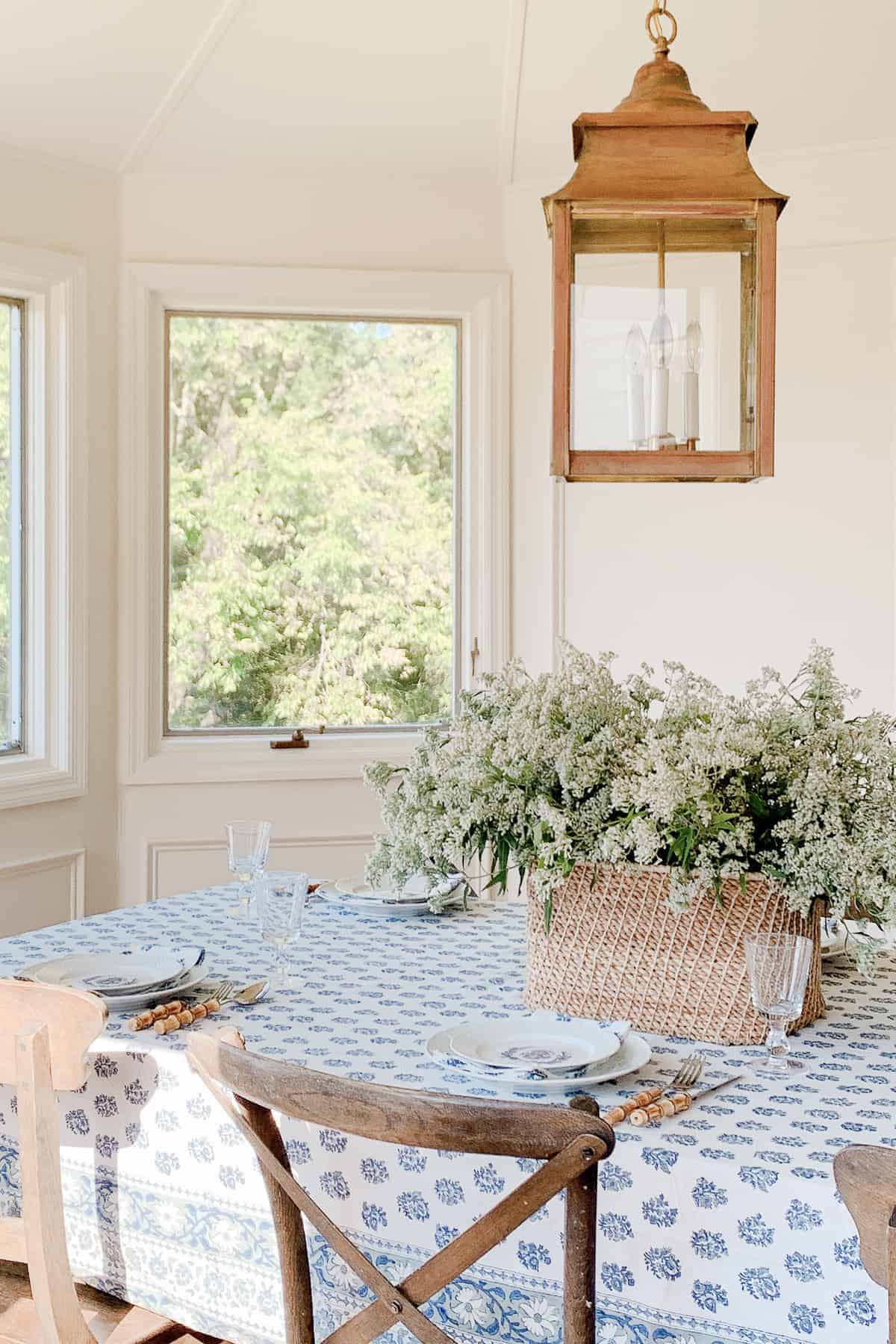
For our breakfast room, we even painted the ceiling in the same color (Benjamin Moore Navajo White) to make the space feel larger and richer.
Get more tips to make a room appear larger here.
Make Cabinets Feel Built In
Painting cabinets the same color as your walls creates a cohesive, built-in feel. Even after market cabinets can look custom when they're painted well.
Painting cabinetry the same color as walls and trim makes it feel like a seamless, integral part of the space and not an afterthought. Adding some beautiful cabinet hardware is the perfect finishing touch.
In our kitchen, we had our inset cabinets painted the same creamy white as the beadboard backsplash, oven hood, window trim, and crown moulding. The effect is a classic, timeless kitchen that will be "in style" for years to come.
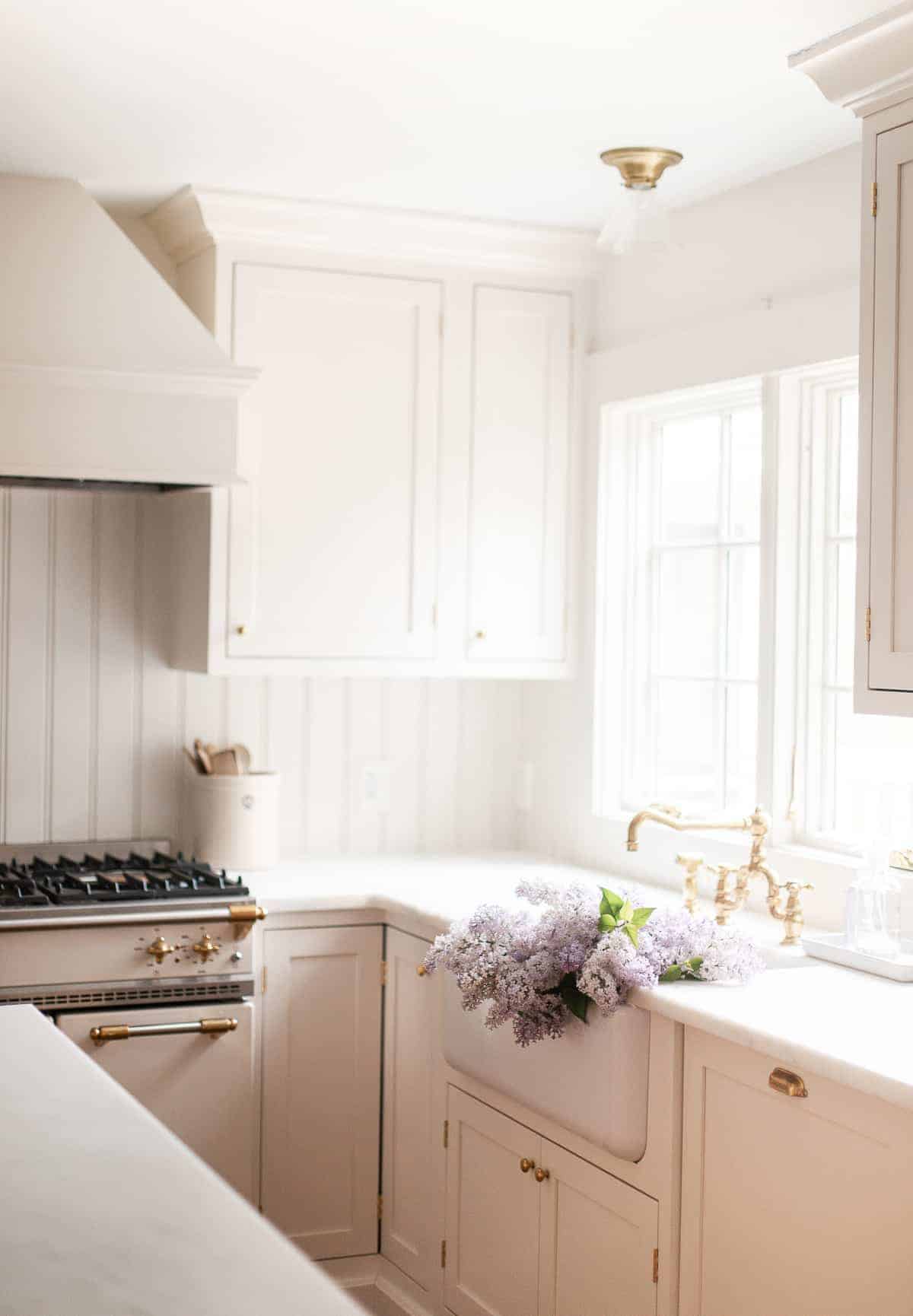
Simple Design
The beauty of this trend is that it can fit seamlessly into any design style. It is right at home with the simplest of styles. You can see it here in the Shaker style, where I painted my simple Peg Rail to match my garage walls, door, and trim.
Yet having walls and trim the same color would look just as beautiful in a home with ornate woodwork or in a Craftsman with thick, squared off trim – it doesn't matter! This simple design works with all home designs!
And because of its simplicity, this trend lets other design elements in a room be the stars. Beautiful artwork, furniture, or textiles can take center stage, because they have the perfect, neutral backdrop.
High Drama
I love my spaces to be warm and cozy. I create this atmosphere by keeping my color palette and furnishings neutral. Get my tips for creating a neutral living room.
However, if you want color, drama, and excitement paint your mouldings and walls a dark and moody color! Emerald Green, Navy Blue, Black, the options are endless.
Everything I've said about this design trend being understated and simple is true, but it can also be fun and exciting and stunning! It all depends on the colors you choose.
Choosing bold, dramatic colors can create a different effect. Imagine a deep emerald green, vibrant eggplant, or radiant burgundy painted floor to ceiling – walls, baseboards, window trim, even doors.
These "jewel box" rooms are on the rise, and it's easy to see why. They are gorgeous and a bit moody, with so much richness to soak in. Even though they have a lot of color, it's not overly bright, so the effect isn't overpowering. Rather, the entire space is simply beautiful!
Frequently Asked Questions
Is it okay to paint walls and trim the same color?
Yes! Painting walls and trim in the same color is a popular trend. Whether you choose a light neutral color or a dark jewel tone, it is more than okay to paint your walls, baseboards, window and door trim, doors, crown moulding, and even your ceilings all the same color.
Should white walls and trim be the same color?
There really isn't a rule to follow, so there isn't anything you "should" or shouldn't do. It's whatever look you prefer. White walls and trim certainly can all be the same color. Your space will feel larger and more cohesive. However, you can also choose two white colors that coordinate but don't exactly match. Tip: Stay away from competing whites. For example, don't pair a warm white with a cool white.
Let's stay in touch! Join our newsletter for access to exclusive content, never-before-seen photos, your questions answered, and our favorite projects. You'll receive the best design secrets delivered directly to your inbox! Sign up here!
Tips
Paint molding one sheen higher than the walls. If your walls are eggshell, use semi-gloss. If your walls are semi-gloss, use gloss for all of the trim including crown, baseboards and other moldings.
Can I Paint My Baseboards a Different Colors
Source: https://julieblanner.com/painting-walls-and-trim-the-same-color/
0 Response to "Can I Paint My Baseboards a Different Colors"
Post a Comment